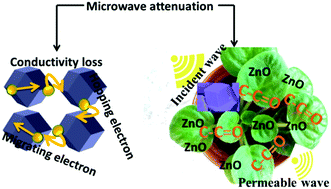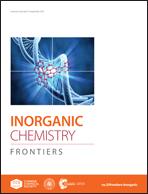Zinc oxide/nanoporous carbon hybrid materials derived from metal–organic frameworks with different dielectric and absorption performances†
Abstract
Different kinds of hetero-structured ZnO/nanoporous carbon (NPC) composites with enhanced microwave absorption properties have been designed through a self-templated route by using zeolitic imidazolate framework (ZIF-8) as raw material. Thus, a series of samples with different dielectric features were obtained via calcination processes. Interestingly, the annealing temperatures during the carbonization procedures play a key role in the impedance matching and the dielectric relaxations for the final products composed of ZnO, NPC and nanopores. The heating temperatures could influence the degree of graphitization and the dielectric features. As a result, a maximum reflection loss of −25 dB with 1.55 mm can be achieved. In a word, this study confirms that the heating temperatures have important influences on dielectric as well as impedance matching for metal–organic frameworks, which is expected to be expanded to the design of many other efficient microwave absorbing materials.



 Please wait while we load your content...
Please wait while we load your content...